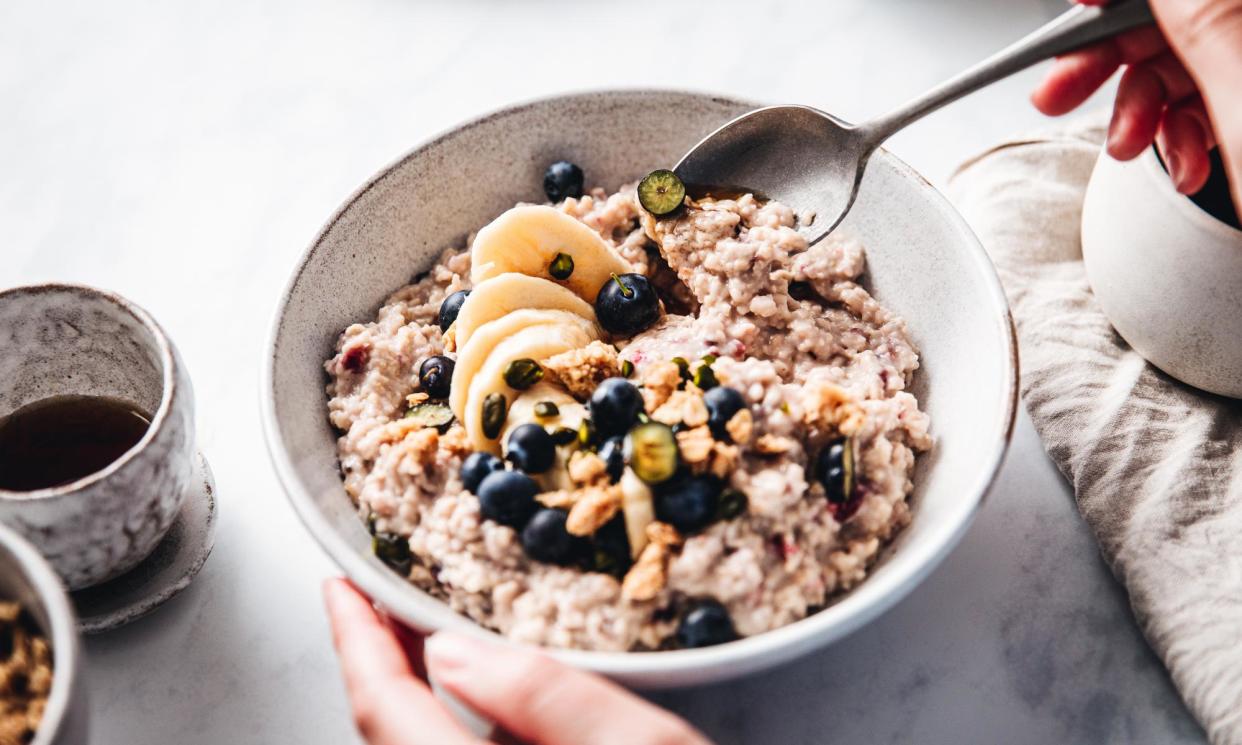Study links bananas, oats and yoghurt to greater diabetes risk in susceptible children

Children who are susceptible to type 1 diabetes and eat bananas, oats and yoghurt are more likely to contract the disease, while consuming strawberries and blueberries lowers the risk, research has found.
Wheat also emerged from the study as a risk factor for the autoimmune form of diabetes, while vegetables such as broccoli, cauliflower and cabbage have a protective effect.
The professor behind the findings said the fact that some fruits contain traces of pesticides may explain why some of them heighten, but others cut, the risk of type 1 diabetes.
Suvi Virtanen and colleagues at the Finnish Institute for Health and Welfare analysed the diet of 5,674 Finnish children who were genetically susceptible to the disease, following them from birth to the age of six. Ninety-four of the children had developed type 1 diabetes by that age and another 206 had developed islet autoimmunity, which meant they were at much higher risk of getting it.
The researchers analysed 34 different food groups and found that the more fruits such as bananas, oats or rye children ate, the greater their risk of getting the disease.
That finding may perplex parents because, Virtanen added, “many of the foods that we found to be associated with increased risk of type 1 diabetes and the disease process are considered part of a healthy diet”.
However, in contrast, eating strawberries, blueberries, raspberries, blackcurrants and other berries seemed to protect children from the condition. The more they ate, the lower their risk.
“Berries are particularly rich in polyphenols, plant compounds which may dampen the inflammation that is associated with the development of type 1 diabetes.
“On the other hand, fruits may contain harmful substances that don’t occur in berries. For example, berries can be free of pesticides that are found on other fruits,” said Virtanen. She is presenting her findings at the annual meeting of the European Association for the Study of Diabetes in Madrid.
She added: “It is important to find out which factors in these foods are responsible for these associations. If berries are found to contain a particular protective factor, for instance, either that substance or berries themselves could be used to prevent T1D.”
But it would be premature to issue any dietary recommendations for what babies and infants should eat, based on the findings, she believes.
The findings do not align with Diabetes UK’s explanation for the causes of T1D. These remain unknown, it has stressed. But it added that it “is not thought to be caused by what you eat or drink”.
“Type 1 diabetes is thought to develop due to a combination of genetics and other factors which are not yet fully understood. But we don’t know more than that. There is nothing to indicate that lifestyle plays a part,” the charity said.
Separate research presented at the same conference shows that “night owls” are almost 50% more likely than those who go to bed earlier to develop type 2 diabetes.
The findings from the Netherlands add to the evidence that people who stay up late often have worse health and a greater risk of developing disease, such as cancer, obesity and heart disease, than those who do not.
However, it is unclear whether that is because many “night owls” drink more, are more likely to smoke and have a worse diet than people who go to bed at a more usual time, or fwhether it is linked directly to the disturbance to their circadian rhythms and not getting as much sleep as doctors consider wise.


